The ground for its introduction to the West was laid in 1893, with the arrival from India of Swami Vivekananda, who gained notoriety when he represented Hinduism at the world Parliament of Religions in Chicago. Soon after, the West’s awareness of Indian philosophy grew, through the work of such groups as the Theosophical Society, founded in the US by Madame Blavatsky. The Society translated most of the ancient Indian philosophical texts available at the time, including an interpretation of the Yoga Sutras of Patanjali by the English novelist and playwright Christopher Isherwood, a member of the Society. Other members of the Society included some of the most prominent intellectuals of the day such as Aldous Huxley, Frank Lloyd Wright and W. B. Yeats. For the next few decades, the West’s interest in Indian philosophy continued to grow. An important voice for the universality of these teachings was the great philosopher and teacher J. Krishnamurti. With awareness of the philosophy grew an interest in the practice with which it was so closely linked – yoga. In 1935, the eminent Swiss psychologist Carl G. Jung even described yoga as ‘one of the greatest things the human mind has ever created.’
One of his Yung’s distinguished pupils was the violinist Yehudi Menuhin, who wrote the foreword for Iyengar’s book Light on Yoga, published in 1966. It wasn’t long before people from all over the world were travelling to India to discover yoga and the Vedic philosophy from which it emerged. Then with the Beatles’ journey to India in 1968, to study Transcendental Meditation with their Guru Maharishi Mahesh Yogi that was Indian became firmly part of the hippy culture. In his memoirs, Unfinished Journey, he wrote: “On our first evening in Delhi, challenged by Pandit Jawaharlal Nehru to show what I could do, I stood on my head in a somewhat rickety fashion, under the critical gaze of his daughter Indira, his sister “Nan” Pandit, and a few members of the government. “Oh, that’s no good!” said Nehru in his sharp way. “I’ll show you.” He took off his little Gandhi hat and very elegantly – although not more elegantly than I can manage it now – upended himself on the drawing room carpet. Dutifully I did my best to emulate my first guru, and we were both on our heads when the splendid turbaned and sashed butler threw open the door to announce that dinner was served.”
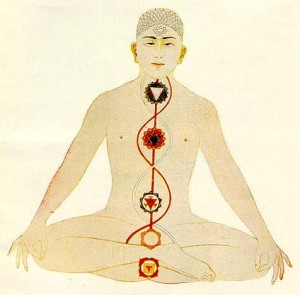 According to Alan Watts:(1915-1973) a professor, graduate school dean and research fellow of Harvard University, drew heavily on the insights of Vedanta. He well known in the 1960s as a pioneer in bringing Eastern philosophy to the West. “For the intellectual type there is the Gnana Yoga, the way of thought; for the feeling type there is Bhakti Yoga, the way of love; for the worker there is Karma Yoga, the way of service. But for those exceptionally gifted, there is a fourth which comprises the other three – Raja Yoga, the royal way, and this contains not only the trinity of thought, love and service, but also that mainly psychic form of yoga known as Hatha…..so great are the powers which it develops that they are only safe in the hands of those of the highest moral discipline, those who can be trusted to use them without thought of personal gain.”
According to Alan Watts:(1915-1973) a professor, graduate school dean and research fellow of Harvard University, drew heavily on the insights of Vedanta. He well known in the 1960s as a pioneer in bringing Eastern philosophy to the West. “For the intellectual type there is the Gnana Yoga, the way of thought; for the feeling type there is Bhakti Yoga, the way of love; for the worker there is Karma Yoga, the way of service. But for those exceptionally gifted, there is a fourth which comprises the other three – Raja Yoga, the royal way, and this contains not only the trinity of thought, love and service, but also that mainly psychic form of yoga known as Hatha…..so great are the powers which it develops that they are only safe in the hands of those of the highest moral discipline, those who can be trusted to use them without thought of personal gain.”
Yoga and Indian Philosophy – by Karel Werner: “The uniqueness of Yoga and its great value for our time lie in the fact that it is based on a living tradition that has remained efficient since ancient times; that it has developed systematic methods for pursuing and reaching its aim; and that these method can be applied and studied today both on the popular level by people with personal inclinations towards following a spiritual path and on the academic level by research workers in various fields such as comparative religion, philosophy, psychology, psychotherapy, and physiology. All other forms of mystical practice are, by contrast, largely a matter of the more or less distant past (eg. the ancient Greek mysteries, Egyptian magic practices, Gnosticism, various forms of shamanism, and medieval Christian mysticism) or if they are partly alive, which some might claim to be, they are closed systems accessible only to believers.”
Karel Werner has observed: “Unlike in Europe, philosophy in India has always been concerned with the individual, his existential situation, his destiny and salvation, i.e. with the final solution to the riddle of man’s existence. The world or the universe – although the question of its origin is the theme of one of the earliest Indian philosophical texts (the hymn of Creation, RV 10, 129) – soon appears to be viewed mainly as the stage on which the drama of life is going on. The important and central problem of philosophical investigation is the nature of man and the means of transcending his present limited situation.”
 “According to the Indian tradition, the ancient Vedic religion is not a product of the imagination of primitive minds reacting to natural phenomena by personifying, worshipping, and dreading them, but on the contrary, is the creation of exceptional individuals who had reached the fullness of mystical vision, which gave them an understanding of and insight into the problems of life and existence that may have amounted to the final knowledge of the truth itself.” And some hymns of the Rig Veda and Atharva Veda, if studied carefully, lead us to admit that only deep experience based on efficient Yoga technique could have produced the profound insights that we find in them.” “There is a spirit of discovery about Yoga that is similar to that often found in modern scientific research. In this field of activity of the human mind Yoga also shares with science the characteristic of a methodical and systematic approach to its task.”
“According to the Indian tradition, the ancient Vedic religion is not a product of the imagination of primitive minds reacting to natural phenomena by personifying, worshipping, and dreading them, but on the contrary, is the creation of exceptional individuals who had reached the fullness of mystical vision, which gave them an understanding of and insight into the problems of life and existence that may have amounted to the final knowledge of the truth itself.” And some hymns of the Rig Veda and Atharva Veda, if studied carefully, lead us to admit that only deep experience based on efficient Yoga technique could have produced the profound insights that we find in them.” “There is a spirit of discovery about Yoga that is similar to that often found in modern scientific research. In this field of activity of the human mind Yoga also shares with science the characteristic of a methodical and systematic approach to its task.”
Yoga is to transform the whole man, to discipline his body, to purify his mind, to touch the very foundations of his being.
Indians’ stance
“The Yoga Philosophy is peculiar to the Hindus, and no trace of it is found in any other nation, ancient or modern. It was the fruit of the highest intellectual and spiritual development. The existence of this system is another proof of the intellectual superiority of the ancient Hindus over all other peoples.”
“The desire to transcend the human condition, to go beyond our ordinary consciousness and personality, is a deeply rooted impulse that is as old as self-aware humanity. But nowhere on Earth has the impulse toward transcendence found more consistent and creative expression than on the Indian peninsula. The civilization of India has spawned an almost overwhelming variety of spiritual beliefs, practices, and approaches. These are all targeted at a dimension of reality that far eclipses our individual human lives and the orderly cosmos of our human perception and imagination. That dimension has variously been called God, the Supreme Being, the Absolute, the (transcendental) Self, the Spirit, the Unconditional and the Eternal.”
“Ayurveda and Yoga can be called sister sciences of ‘self-healing and self-realisation’. Both evolved from a Vedic background in ancient India, based on the same philosophy, sharing many practices. Ayurveda, the ‘yogic form of healing’, is aimed at bringing us back into harmony with our true Self or Atman. The great Ayurvedic teacher Charaka defines Ayurveda as the harmony of body, prana, mind and soul. Patanjali defines yoga as controlling the mind in order to realise the Purusha.”
“Yoga is the spiritual aspect of Ayurveda. Ayurveda is the therapeutic branch of Yoga.”
Carl G. Jung (1875-1961) the eminent Swiss psychologist in 1935, described yoga as ‘one of the greatest things the human mind has ever created.’ Harold Coward says that the main basis of Jung’s understanding of karma came from his study of Patanjali’s Yoga Sutras. Jung formulated his archetypes in terms of the karma theory. Says Jung: “We may accept the idea of karma only if we understand it as ‘psychic heredity’ in the very widest sense of the word.” In his later thought Jung saw karma as the motivation for knowledge that leads from past life into this life and onto future lives.
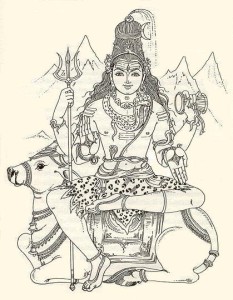 Lord Krishna – Master of Yoga: “The supreme bliss is found only by the tranquil yogi, whose passions have been stilled. His desires washed away, the yogi easily achieves union with the Eternal. He sees his Self in all beings, and all beings in his Self, for his heart is steady in Yoga.” ~ The Bhagavad Gita
Lord Krishna – Master of Yoga: “The supreme bliss is found only by the tranquil yogi, whose passions have been stilled. His desires washed away, the yogi easily achieves union with the Eternal. He sees his Self in all beings, and all beings in his Self, for his heart is steady in Yoga.” ~ The Bhagavad Gita
Prophetic monotheism and Yoga (A Secular Look at the Bible): “In fact, prophecy is radically different from yoga: it means allowing an outside entity, which in the case of monotheism is called Yahweh/God/Allah, to blow certain consciousness contents into your mind. Consciousness is not turned inward, but is (or believes it is) communicating with another Being. Moreover, the mind is not being emptied of its contents and made to rest in itself, as it is in yoga; on the contrary, it is being filled with a message beyond one’s control. The prophet receives a certain information: prophecy is like talking, though with an unusual partner via an unusual channel; but yoga is silence
Yoga is not an erratic and disturbing experience, which befalls you and drives you to tirades of doom and to outbursts against your fellow men. It is a systematic discipline and makes the practitioner calm and serene. The word yoga means discipline, control (it is also translated as “uniting”: not the soul with an outsider called God, but the mind with its object, (i.e. concentration). Since its field of working is consciousness, it is not interested in outward experiences such as recognition and glorification, or martyrdom. There is nothing dramatic about yoga, in stark contrast to the dramas enacted and encountered by the prophets.
The most remarkable difference between the prophets’ discourse and that of the rishis, is certainly this. The prophets all talk about themselves a lot. They think they are very special, this one person in this one body is different from the rest and has an exclusive relationship with the Creator. But the rishis talked about a universal way, a world order in which we all participate, a state of consciousness we can all achieve. If God is defined as that which transcends all worldly differences, the One above the Many, then this universalism is far more divine than the prophets’ exclusivism.”
“It is Christian fundamentalists who warn people of the Satanic Hindu character of these seemingly innocuous breathing and mental exercises.”
… Pope issued a proclamation telling Catholics, particularly monks and priests, to avoid yogic practices and mixing Catholicism with Eastern traditions like the Hindu and Buddhist.
In the book Pope John-Paul II on Eastern Religions and Yoga: …condemning the incorporation of yogic practices in the spiritual discipline of Christian clerics and laymen.
De-linking Yoga from Hinduism
Yoga is Hinduism’s gift to humanity. Christians Trying to Hijacking Yoga: The tendency of Christianity to absorb spiritually ‘dangerous’ practices is an old trick of theirs. To speed the assimilation of the European pagan religions in the Middle Ages. You got to love the hypocrisy of Christians. They deny the knowledge, wisdom and mere existence of pre-Christian practices, but as we’ve seen throughout history that doesn’t stop them from completely ripping them off.
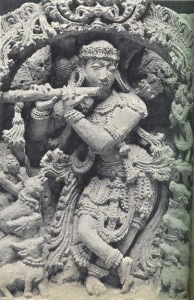 Folks still don’t get that it’s not at all about ownership, but about origins. It’s not about branding, but about acknowledgement. It’s not about conversion, but about self realization. It’s about understanding that yoga is but one of Hinduism’s great contributions to humanity, Acknowledgement of yoga as one of Hinduism’s great gifts to the World.
Folks still don’t get that it’s not at all about ownership, but about origins. It’s not about branding, but about acknowledgement. It’s not about conversion, but about self realization. It’s about understanding that yoga is but one of Hinduism’s great contributions to humanity, Acknowledgement of yoga as one of Hinduism’s great gifts to the World.
As an advocacy group seeking to provide a progressive Hindu American voice and to promote a better understanding of Hinduism, we were compelled to act. And so started a quest to bring awareness to the Hindu roots of yoga and, in turn, gain acknowledgement of yoga as one of Hinduism’s great gifts. Hindus across America face ridicule, discrimination and uninvited proseltyization as a result of caricature, misinformation and false judegment about our “religion.” Idol worshipper, cows, caste, dowry, many gods (lower case “g”) — these are the terms that more commonly define Hinduism in Western popular culture. Thanks to Deepak Chopra, we can add “one-eyed” and “tribal” to the list too. At the same time, 15 million Americans, from all religions and no religion, are turning to the power and healing benefits of yoga; some are even going beyond the physical to study Vedanta and the Gita or other “yogic” texts.
The rape of Yoga
…Apart from the aforementioned distortions of a 5,000-year-old science, we now see the rise of “Christian Yoga”, “Muslim Yoga”, “Kabbalah Yoga” and what have you.
…Each of these “nuanced faith-yogas” have appropriated the knowledge of countless yogis without so much as a nod of gratitude towards Hinduism, the faith that gifted them this treasure.
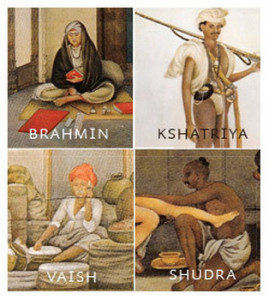 …Hinduism today is identified overseas more with holy cows than Gomukhasana, the arduous twisting posture and exotic and erotic gods rather than the unity of divinity of Hindu tradition – that God may manifest and be worshipped in infinite ways; as a religion of incomprehensible ritual rather than the spiritual inspiration of Patanjali, the second century BC commentator and composer of the Yoga Sutras, that has formed the philosophical basis of practical Yoga for millennium.
…Hinduism today is identified overseas more with holy cows than Gomukhasana, the arduous twisting posture and exotic and erotic gods rather than the unity of divinity of Hindu tradition – that God may manifest and be worshipped in infinite ways; as a religion of incomprehensible ritual rather than the spiritual inspiration of Patanjali, the second century BC commentator and composer of the Yoga Sutras, that has formed the philosophical basis of practical Yoga for millennium.
…As Yoga becomes more “mainstream”, its Hindu roots continue to be buried further and further by studios, practitioners and the media. While magazines such as Yoga Journal are replete with references to ancient India, new age blather and even Buddhism, it is only logical to ask why is there so much resistance to openly acknowledging Yoga’s inextricable links with Hinduism.
As these Western gurus highlight only the universal nature of Yoga while discarding overt references to Hinduism. They end up grabbing the transcendent philosophical fruits of the ancients, leaving Hinduism with stereotyped detritus of incomprehensible ritual and the cliched “caste, cows and curry.” As the popularity of Yoga has skyrocketed and spiritual practice has morphed into a $6 billion industry, this de-linking has become so prevalent and commonplace that many in the western yoga community are outraged that any faith, particularly one that is now largely associated with colorful rituals and multi-headed gods, could dare claim to be the mother of Yoga.
 …If you have the root of Hinduism, then the stem is Hinduism, and the flower is Hinduism….Yoga uncoupled with a moral construct leads nowhere, except towards being more physically fit. Hinduism provides that moral construct….It is wrong to deny that yoga’s Hindu origin….Yoga has been shamelessly re-branded to make it more acceptable to western culture, but this is based on a lie.
…If you have the root of Hinduism, then the stem is Hinduism, and the flower is Hinduism….Yoga uncoupled with a moral construct leads nowhere, except towards being more physically fit. Hinduism provides that moral construct….It is wrong to deny that yoga’s Hindu origin….Yoga has been shamelessly re-branded to make it more acceptable to western culture, but this is based on a lie.
…But as yoga became more popular, and as the industry grew to be worth nearly six billion dollars, and as a variety of savvy marketers begin branding their “special” yoga techniques, it was hard not to notice that few yoga teachers and journals mentioned the origins of the practice and its connection to Hinduism. Yoga was “secularised” to rid it of any taint of a “pagan” tradition. The practice, the savvy marketers claimed, was “a spiritual path, but not a religious one”, to calm the committed Christian who wanted to hang on to Jesus while doing the “surya namaskara” (obeisance to the Sun).
…Thus, when a neophyte yoga student, hanging on to Jesus, anxiously queried, “Is yoga part of Hinduism?”, the savvy marketer claimed that the origins of yoga were lost in myth and mystery and that there “was no indication that it was ever part of an organised religion”, accomplishing two things simultaneously – reifying Hinduism as a “religion” in the sense of “Abrahamic religions”, and denying it as the fount and foundation of yoga.
…But what do Hindus, not the deracinated variety, actually want? It is simply to urge the world to acknowledge that yoga has its roots in the millennia-old Indian traditions now known as Hinduism. There is no demand that those who do yoga profess any attachment to Hinduism, let alone become Hindus! There is no tithe to be paid, no conversion sought, no allegiance to a land and its people demanded.
…What should also be acknowledged is that most of the yoga that is taught and practiced in the West is “hatha yoga”, and that the focus on the body was only a very minor aspect of yoga delineated by the great compiler of the yoga aphorisms, Patanjali. In fact, of the 196 sutras in Patanjali’s Yogasutras, only three focus on the body. The primary aim of yoga, Patanjali stressed in the second sutra, is to still the mind for a transformation of consciousness. Yoga is a complete psychological system, with clear and definite answers to explain the human condition and relieve us of our psychological burdens.
 …Alas, in the modern, westernised, noise-making world, the argument presented by Hindus is under attack from the professional anti-Hindu brigades, homegrown and foreign, whose aim is to proclaim yoga as “anaatha” – an orphan.”
…Alas, in the modern, westernised, noise-making world, the argument presented by Hindus is under attack from the professional anti-Hindu brigades, homegrown and foreign, whose aim is to proclaim yoga as “anaatha” – an orphan.”
After writing a letter to the editor of Yoga Journal, during a follow up phone call, the young woman answering said, “Yeah, they [the editors] probably avoid it [Hinduism]. Hinduism does, like, you know, have a lot of baggage.” Really? Hinduism has baggage and the world’s other religions don’t?
…Hinduism has baggage and the world's other religions don't? - Try thinking of Dark Ages, Crusades, The Inquisition, Witch Hunt, Slavery, Colonization of Africa, Asia, America and Australia, Imperialism, World Wars, Holocaust, Bombing of Nagasaki and Hiroshima, destruction and conversion of Native cultures to Christianity, Drugs, School shootings in American schools, Gun violence, Racism, Clergy sex Abuse,... ).
..“There is no physical yoga and spiritual yoga. If it is exclusively physical, it won’t be yoga. Yoga is dealing with the entirety; it is a union.”
…A Hindu Yogi Speaks: “There is no Christian Yoga.” “It was quite astonishing to see on the flyer ‘Christian Yoga!” I could feel the wheels spinning in my brain. ‘Christian Yoga,’ I thought. Now while Christians can practice yoga, I am not aware of any Christian teachings about yoga. Yoga is not a Judeo/Christian word! It is not a part of the Roman Catholic teachings and certainly not a part of protestant teachings. It is not found within the King James Version of the bible. It is a Hindu word, or more correctly a Sanskrit word from the Vedic civilization. So how did we get ‘Christian Yoga’? From this I could conclude that “Christian Yoga” could only indicate one of two possibilities:
1) Christianity is threatened by yoga and is attempting to take over this system that “invaded their turf” pertaining to spiritual teachings and techniques.
2) Christianity is subconsciously attempting to return to the spiritual roots of civilization—the Vedic civilization.
 I thought to myself, “why would they want to take over yoga?” Could it be due to the decline of members within the Christian church within the last 60 years? Is this an extensive marketing plan cooked up in some New York marketing guru’s head? Is it an attempt to water down the teachings of yoga and import their own teaching. I think the best reason might be that yoga, and eastern spirituality, offered answers to the spiritual questions that the spiritually hungry masses had. It offered a practical, rational, logical, and truthful approach to spirituality. It did not contain any form of self-righteous condemnation, but offered love and acceptance to all. It did not prey upon victims with terms such as “Sin” and “eternal damnation”. But most importantly, it had answers! It offered a practical approach to cultivating a relationship with divinity. It offered a systematic approach and an abstract approach to meet the varying temperaments of the spirituality hungry.
I thought to myself, “why would they want to take over yoga?” Could it be due to the decline of members within the Christian church within the last 60 years? Is this an extensive marketing plan cooked up in some New York marketing guru’s head? Is it an attempt to water down the teachings of yoga and import their own teaching. I think the best reason might be that yoga, and eastern spirituality, offered answers to the spiritual questions that the spiritually hungry masses had. It offered a practical, rational, logical, and truthful approach to spirituality. It did not contain any form of self-righteous condemnation, but offered love and acceptance to all. It did not prey upon victims with terms such as “Sin” and “eternal damnation”. But most importantly, it had answers! It offered a practical approach to cultivating a relationship with divinity. It offered a systematic approach and an abstract approach to meet the varying temperaments of the spirituality hungry.
The second possibility was that Christianity was itself looking for answers. A small book filled with judgment, inflexibility, and condemnation was no longer fulfilling the needs of the masses or the leaders of the church. Offering yoga classes allowed the Christian to secretly practice Hinduism without having to renounce their Christian tradition. Possibly by embracing the technology of yoga and meditation, the Christian church could finally return to the idea of love and acceptance that it believed it was founded upon. It is ironic that one religion would need to look to another religion to teach them about love, peace, harmony, and forgiveness. If successful, it could embrace these ancient teachings and save itself from the fate it planted over the last few thousand years.
But possibly in their wisdom, the current fathers of the church realized that their time was coming to a close. So within America they must absorb yoga before they are absorbed by it. This is a common religious view that has appeared numerous times within world history. Then they would immediately move their resources to India. Taking over the country would allow them to own all the spirituality, and then ‘pick and chose’ which tasty spiritual treats they would share. After all they have 2000 years practice with this. Indians being a loving, peaceful people, openly embraced their brothers from the west. They looked the other way as their temples were torn down. They accepted it as karma as their families were torn apart over differing religious beliefs. The Indians thought it was thoughtful of the missionaries to dress up just like swami’s, to be “just like them” and to share in their kindred spirit.
…A Hindu Yogi Speaks: “There is no Christian Yoga.”). Vatican sounds New Age alert: The Roman Catholic Church has warned Christians against resorting to New Age therapies to satisfy their spiritual needs. Publishing the results of a six-year study of practices such as yoga, feng shui and shamanism, the Vatican said that whatever the individual merits of such therapies, none provided a true answer to the human thirst for happiness. “I want to say simply that the New Age presents itself as a false utopia in answer to the profound thirst for happiness in the human heart,” Cardinal Paul Poupard, head of the Pontifical Council for Culture, said at the news conference. Many people, the report acknowledges, have rejected organised religion because they feel it fails to answer their needs. Our correspondent says that the report makes clear that the Vatican basically dislikes fuzzy spirituality.
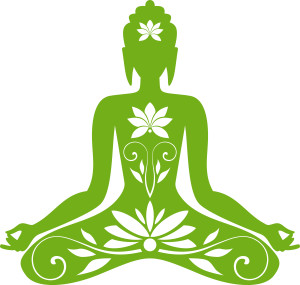 …New age yoga: Old age theft and surrender. New Age Yoga (NAY) is: Hot Yoga, Power Yoga and Gentle Yoga, to name few. There are especially arrogant individuals who even attach their own names to these Hindu disciplines. There are so-called 200 hour Certified Yoga Teachers and Yoga Therapists. Imagine treating Baptism and Communion as an Underwater Therapy and Wine Tasting business! Envision a Fitness Rabbi, Diet Pope and Gaming Imam! Picture Hot Baptism (at your local gym), Power Mass and Gentle Genuflecting! How about a 200 hour Certified Communion Teacher greeting students with Hallelujah and denying any Christian connection? How about marketing Baptism pants to display one’s physical accomplishments! As ridiculous as this seems, this is exactly how callous, absurd and insulting is the NAY crusade. In the “NAYsayers” dogma, Yoga is everything but religion. To them, Yoga is a physical exercise and, perhaps, an elite universal spiritual practice. The thoughtless cliché: “I am spiritual but not religious,” is a common deception. It is in this pseudo-spirituality that NAY gets very bizarre.
…New age yoga: Old age theft and surrender. New Age Yoga (NAY) is: Hot Yoga, Power Yoga and Gentle Yoga, to name few. There are especially arrogant individuals who even attach their own names to these Hindu disciplines. There are so-called 200 hour Certified Yoga Teachers and Yoga Therapists. Imagine treating Baptism and Communion as an Underwater Therapy and Wine Tasting business! Envision a Fitness Rabbi, Diet Pope and Gaming Imam! Picture Hot Baptism (at your local gym), Power Mass and Gentle Genuflecting! How about a 200 hour Certified Communion Teacher greeting students with Hallelujah and denying any Christian connection? How about marketing Baptism pants to display one’s physical accomplishments! As ridiculous as this seems, this is exactly how callous, absurd and insulting is the NAY crusade. In the “NAYsayers” dogma, Yoga is everything but religion. To them, Yoga is a physical exercise and, perhaps, an elite universal spiritual practice. The thoughtless cliché: “I am spiritual but not religious,” is a common deception. It is in this pseudo-spirituality that NAY gets very bizarre.
…Divorcing any aspect of Yoga from its Hindu roots is dishonest and a grave insult to a great world religion and it adherents. Presently, the Yino flock to their studios and completely shun Hindu Temples/Ashrams and teachers. Ironically, qualified Hindu teachers have been denied teaching Hatha Yoga in a public setting not only because it is religion but also because they did not have a Western Yoga Certification! The “Certified Yogis/Yoginis” are, actually, clueless not only to the facts of Yoga but also to the austere and devoted lifestyle of the true Yogi.
…If one wants to learn Hinduism/Yoga (and perhaps become a Hindu), do that. If one wants to stretch and relax, be thoughtful and considerate and don’t call it Yoga.
…According to Father Jeremy Davies, exorcist for the leader of Catholics in the UK, yoga puts people at risk from devils and the occult is closely associated with the scourges of “drugs, demonic music and pornography” which’re “destroying millions of young people in our time”. Father Davies has argued in his new book ‘In Exorcism: Understanding Exorcism In Scripture And Practice’ published by the Catholic Truth Society, that people who practice yoga may end up afflicting themselves by demons, British newspaper the ‘Daily Mail’ has reported.
…The Vatican, in a letter approved by Pope John Paul II, warned Christians against spiritual dangers deriving from Eastern methods of contemplative meditation used in Yoga and Zen Buddhism. It said the symbolism and body postures in such meditation ”can even become an idol and thus an obstacle to the raising up of the spirit of God.” It warned that to give ”a symbolic significance typical of the mystical experience” to sensations of well-being from meditation can lead to ”a kind of mental schizophrenia which could also lead to psychic disturbance and, at times, to moral deviations.”
…According to the Rev. Peter E. Prosser, who is both a priest at Galilee Episcopal Church in Virginia Beach and a Christian history professor at Regent University’s divinity school says, “Yoga is designed to bring you into a spiritual realm of demonic powers.”
…Vatican’s chief exorcist has claimed that practicing yoga and reading ‘Harry Potter’ brings evil. Father Gabriel Amorth, who has carried out more than 70,000 exorcisms in the past 25 years after being appointed by the late Pope John Paul II, surprised delegates at a conference by revealing his dislike for yoga and ‘Harry Potter’. “Yoga is the Devil’s work. You thing you are doing it for stretching your mind and body but it leads to Hinduism. All these oriental religions are based on the false belief of reincarnation,” he said.
 …On June 15, 2006, Agape Press carried this article: Author Wants to Enlighten Christians About Yoga’s Demonic Influence Christian author Dave Hunt, co-founder of the Oregon-based ministry, The Berean Call, has written a new book called Yoga and the Body of Christ. In it, he contends that yoga is a spiritually dangerous practice designed to expose people to demonic influences. Why would Mr. Hunt fear “self-realization”? Why would he advise “Christians” to avoid it? Could it be that if people achieve self-realization they will recognize the sinister mind-control techniques of “ministries”? Could it be that they would also realize that if they develop a “personal relationship with God,” there is no need for ministries? The clergy would become little more than “middlemen” who, like all middlemen, leech off others for their own self-aggrandizement. In fact, the clergy would become “demonic influences” interrupting, twisting and poisoning one’s personal relationship with Divinity for their own power and profit. It must be noted, however, that the Eastern spiritual philosophies that spawn yoga do not advocate hatred toward or the murder of gays, or anyone else. So feel free to join the estimated 30 million Americans who practice yoga, and beware those who argue against self-realization and thinking for yourself.
…On June 15, 2006, Agape Press carried this article: Author Wants to Enlighten Christians About Yoga’s Demonic Influence Christian author Dave Hunt, co-founder of the Oregon-based ministry, The Berean Call, has written a new book called Yoga and the Body of Christ. In it, he contends that yoga is a spiritually dangerous practice designed to expose people to demonic influences. Why would Mr. Hunt fear “self-realization”? Why would he advise “Christians” to avoid it? Could it be that if people achieve self-realization they will recognize the sinister mind-control techniques of “ministries”? Could it be that they would also realize that if they develop a “personal relationship with God,” there is no need for ministries? The clergy would become little more than “middlemen” who, like all middlemen, leech off others for their own self-aggrandizement. In fact, the clergy would become “demonic influences” interrupting, twisting and poisoning one’s personal relationship with Divinity for their own power and profit. It must be noted, however, that the Eastern spiritual philosophies that spawn yoga do not advocate hatred toward or the murder of gays, or anyone else. So feel free to join the estimated 30 million Americans who practice yoga, and beware those who argue against self-realization and thinking for yourself.
Christian Yoga – an oxymoron: While Yoga is not a “religion” in the sense that the Abrahamic religions are, it is a well-established spiritual path. Its physical postures are only the tip of an iceberg, beneath which is a distinct metaphysics with profound depth and breadth. Its spiritual benefits are undoubtedly available to anyone regardless of religion. However, the assumptions and consequences of yoga do run counter to much of Christianity as understood today. This is why, as a Hindu yoga practitioner and scholar, I agree with the Southern Baptist Seminary President, Albert Mohler, when he speaks of the incompatibility between Christianity and yoga, arguing that “the idea that the body is a vehicle for reaching consciousness with the divine” is fundamentally at odds with Christian teaching. This incompatibility runs much deeper.
Yoga’s metaphysics center around the quest to attain liberation from one’s conditioning caused by past karma. Karma includes the baggage from prior lives, underscoring the importance of reincarnation. While it is fashionable for many Westerners to say they believe in karma and reincarnation, they have seldom worked out the contradictions with core Biblical doctrines. For instance, according to karma theory, Adam and Eve’s deeds would produce effects only on their individual future lives, but not on all their progeny ad infinitum.
Karma is not a sexually transmitted problem flowing from ancestors. This view obviates the doctrine of original sin and eternal damnation. An individual’s karmic debts accrue by personal action alone, in a separate and self-contained account. The view of an individual having multiple births also contradicts Christian ideas of eternal heaven and hell seen as a system of rewards and punishments in an afterlife. Yogic liberation is here and now, in the bodily state referred to and celebrated as jivanmukti, a concept unavailable in Christianity and in an afterlife somewhere else. Ironically, the very same Christians who espouse reincarnation also long to have family reunions in heaven. Yogic liberation is therefore not contingent upon any unique historical event or intervention.
The Abrahamic religions posit an infinite gap between God and the cosmos, bridged only in the distant past through unique prophetic revelations, making the exclusive lineage of prophets indispensable. Yoga, by contrast, has a non-dual cosmology, in which God is everything and permeates everything, and is at the same time also transcendent.
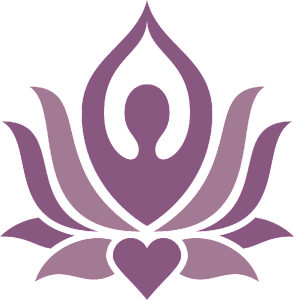 The yogic path of embodied-knowing seeks to dissolve the historical ego, both individual and collective, as false. It sees the Christian fixations on history and the associated guilt, as bondage and illusions to be erased through spiritual practice. Yoga is a do-it-yourself path that eliminates the need for intermediaries such as a priesthood or other institutional authority. Most of the 20 million American yoga practitioners encounter these issues and find them troubling. Some have responded by distorting yogic principles in order to domesticate it into a Christian framework, i.e. the oxymoron, ‘Christian Yoga.’
The yogic path of embodied-knowing seeks to dissolve the historical ego, both individual and collective, as false. It sees the Christian fixations on history and the associated guilt, as bondage and illusions to be erased through spiritual practice. Yoga is a do-it-yourself path that eliminates the need for intermediaries such as a priesthood or other institutional authority. Most of the 20 million American yoga practitioners encounter these issues and find them troubling. Some have responded by distorting yogic principles in order to domesticate it into a Christian framework, i.e. the oxymoron, ‘Christian Yoga.’
…New Delhi, India. June 7, 2010: The Council for Scientific and Industrial Research has prepared patent formats of nearly 900 yoga asanas (postures), to prevent European and American companies involved in fitness-related activities from claiming them as their own. The asanas have been collected from Patanjali’s classic work on yoga, as well as other ancient classics like the Bhagwat Gita.
…Church protests, Croatia dumps yoga: Croatia’s education ministry has withdrawn its recommendation that teachers take yoga classes after the Roman Catholic Church accused it of trying to sneak Hinduism into schools. Croatia’s bishops issued a fierce protest of the planned yoga classes, calling it “unacceptable to introduce into the schools topics that are in contradiction with the generally accepted system of values and the European cultural tradition.” “Hindu religious practice will be brought into the schools under the guise of exercises,” the bishops said.
…Yoga is one of the fastest growing extra-curricular activities in the United Kingdom with a following among all sections of society.
…Gods in New Age film: The seemingly innocuous devices used range from Yoga meditation to a belief in reincarnation. We are given an extraordinary inside glimpse into an eerie world of cult mentality and mindless obedience, and we see how an outright attack against traditional American beliefs has been successfully launched, not only from Hindu missionaries, but from unsuspecting Americans who have accepted the surface manifestations of this religion as trendy and fun. Many of these concepts, amazingly. have found their way into American churches which, themselves, are the very target of the attack. The film covers the chilling parallels between the belief structure in today’s New Age subculture and that in Hitler’s Third Reich two generations ago.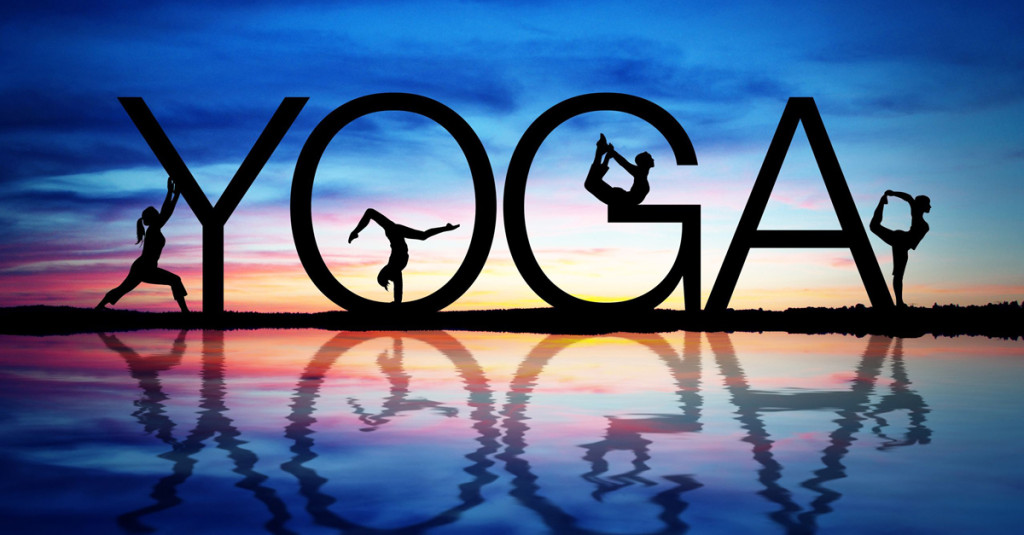
Source: http://www.hinduwisdom.info/Yoga_and_Hindu_Philosophy.htm
